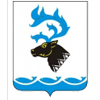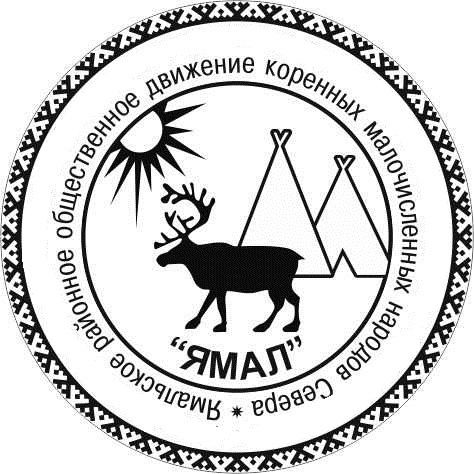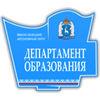On June 9th in the morning heavy rain has started, and we cancelled our moving to the next encampment place. Children are watching to the animation on tablet PC.

During yerkolava (picking up bulls for herdsmen on duty) this day for the first time we are observing joined together herd of three families. Before bulls were separated from the she-deers and reindeers-fawns. The total number of reindeer in herd is more that 1300 now - it's really impressive to the eye. Before yerkolava they give reindeer some rest, men use this pause for training with lasso. On the picture there is Myangcha, little Igor is watching him throwing the lasso:

Reindeers of three families are moving together:
(please press on "Читать далее")
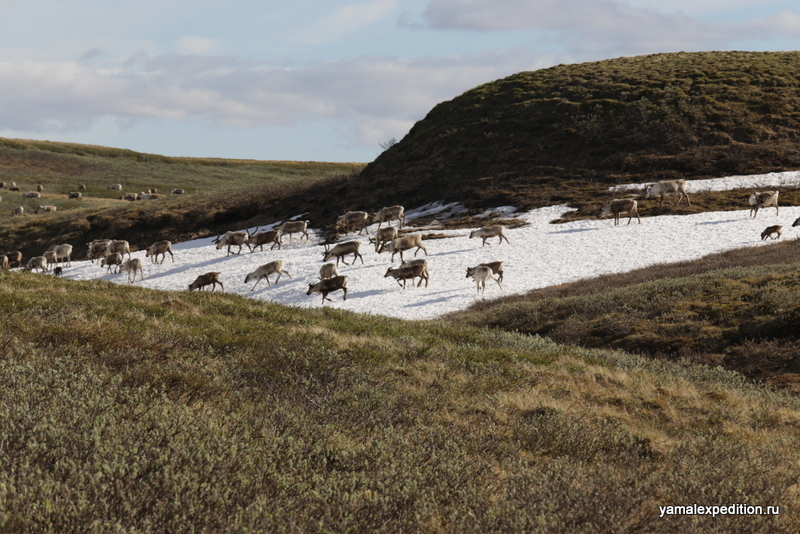

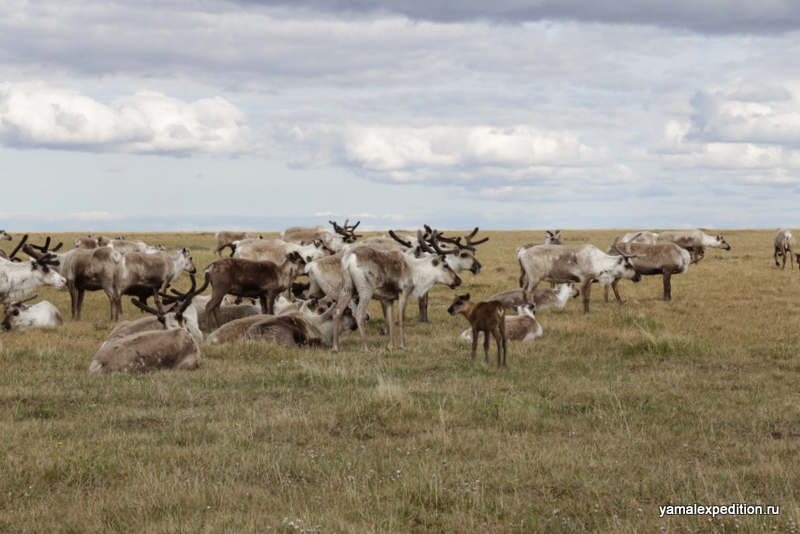
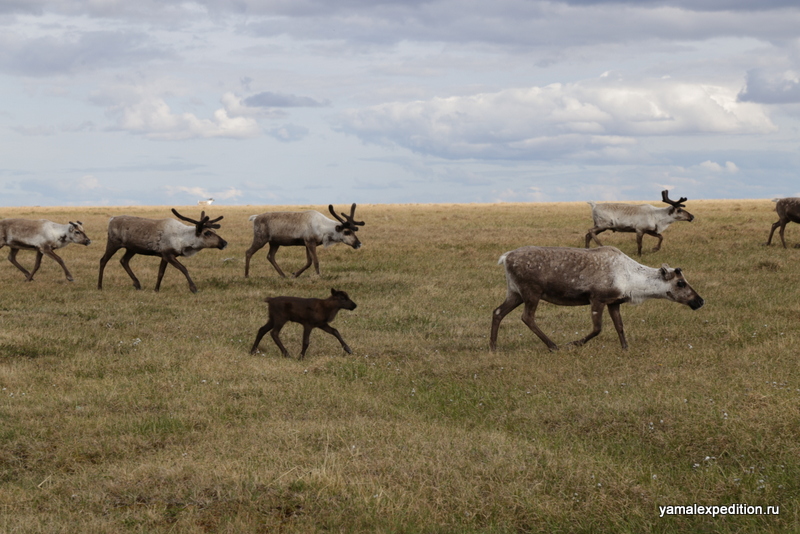
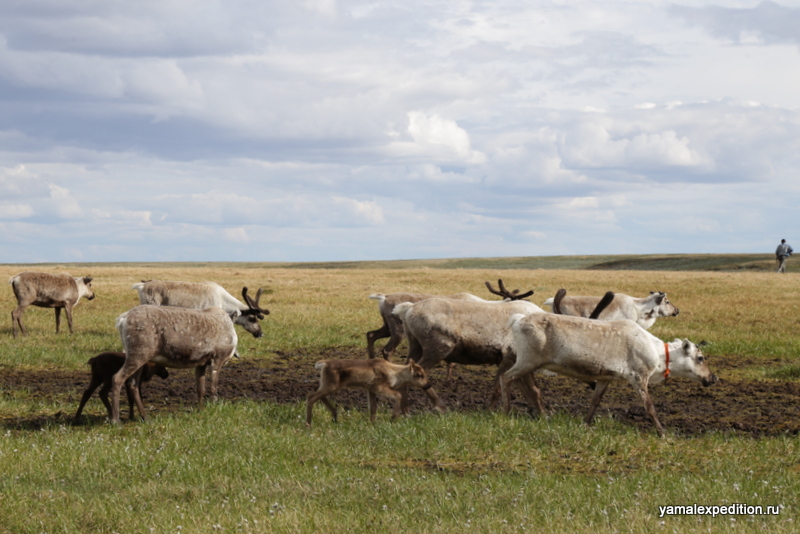
Kostya Hudi is hurrying a reindeer fawn:
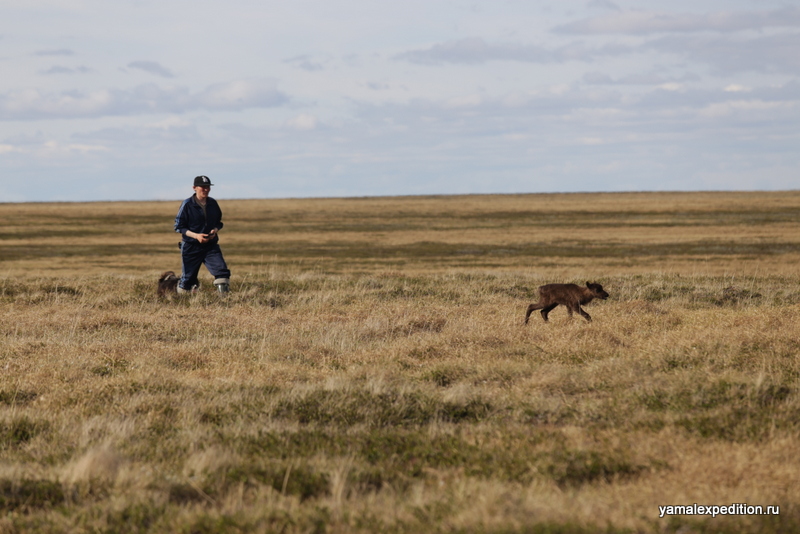
On June 10th 2015 we arrived on our 20th encampment point: N 69º54'05,5'' E 068º56'34,6'', linear distance from the last encamptent - 3,2 km. This place is quite "popular" among reindeers herders: in wintertime you could find here Nenets from the Northern parts of Yamal (Yamal is called the Northern end of the Yamal peninsula), and in summertime - reindeer herers' brigade N 2 MOP. 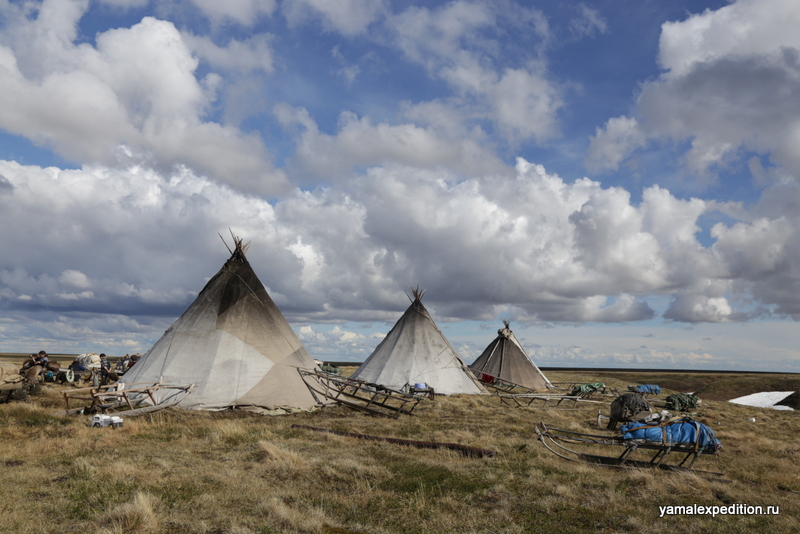
Teams of herders on duty:
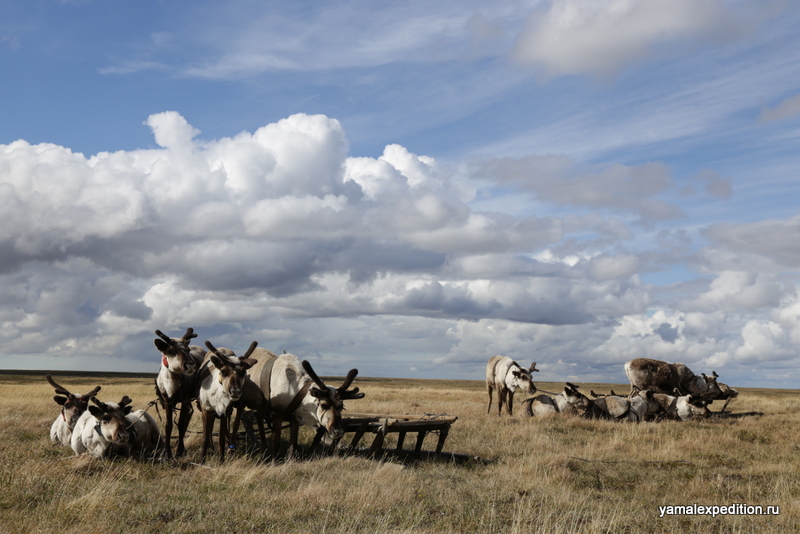
Rainbow over tundra:

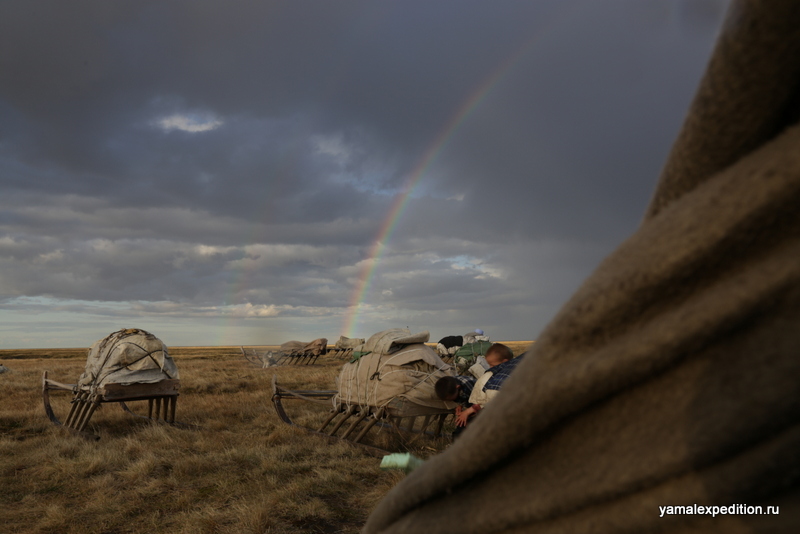
First flowers in tundra:

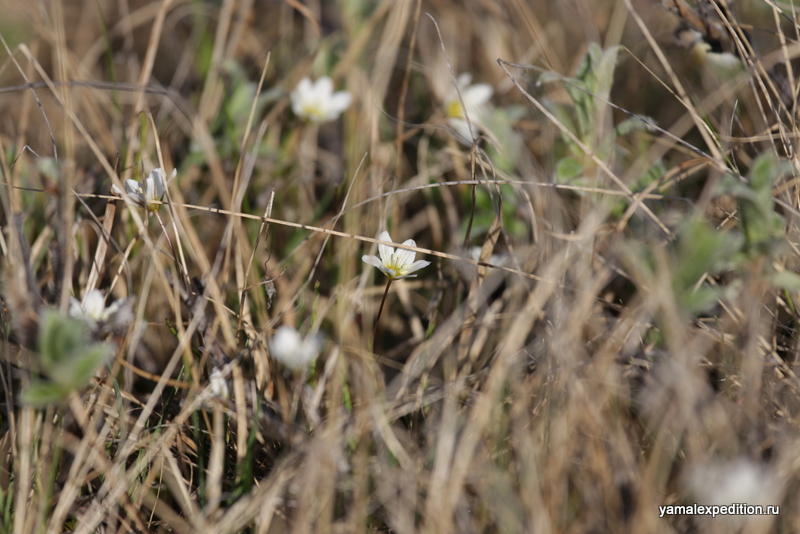
Srarting from about June 11th 2015 we added fish to our day food ration. During summer months our hosts and other reindeer herders are trying not to slaughter reindeers, and as it is called by scientists, "thus they have to compansate lack of protein by addind fish to the daily meal". This is true. Also true is that the Nenets living close to towns, are catching fish for sale, and it's hard to measure the scale and volume of this catching.
The absolute favoriveы among different sorts of fish is broad whitefish (Coregonidae). One almost never can catch the more valuable muksun (Coregonus muksun) in the lakes along our moving route. One can find also less valuable fish from the Coregonidae family: Siberian white fish and peled (Coregonus peled) and a lot of pike (rather small in herder's opinion, less than 3 kgs a fish). Different from other Russian regions, pike is not valuable catch for the Nenets - it can not be eaten raw, and also women are not allowed to clean it (in some families it is even forbidden to eat pike). These tabus are not valid for dogs: they love to eat pike, even raw!
Our men put the fish nets in the lake in 6,5 km distance from the encampment. All lakes' and rivers' names the Nenets know and call in the Nenets lanquage, but this one is an exception: everybody calls it in Russian "Восьмерка" (which means "Eight") for it's 8-like shape.
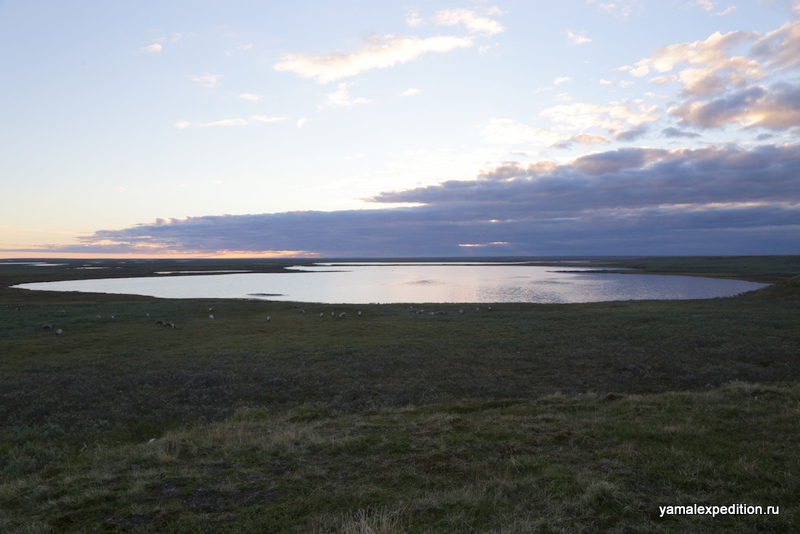
Another herder's duty now is to check the nets. Once a day they come to the lake and in the rubber boat come closer to the nets, check them, and if needed remove and put nets in other place. The Nenets leave pike on the snow, and pick white fish to bring it back to encampment. The average day's harvest is about 30 kilograms, mostly it is broad whitefish. Then the harvest is devided between three chums and women immediately srart to clean the fish - remove scales, gut and cut off filet parts. Partly fish will be eaten raw, some harvest will be kept for later: some salt is added to keep it unrotten. Later it will be eaten as light-salted or boiled.
Kostya and Alexander are tieyng nets:
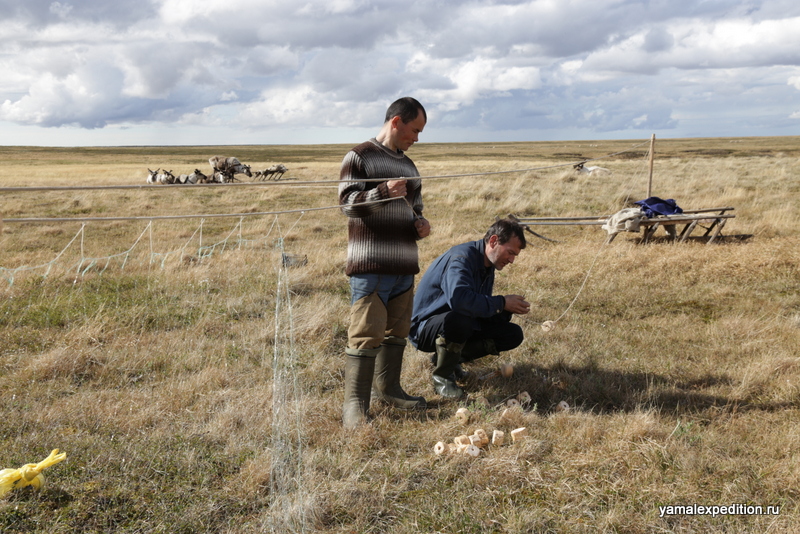

We spend several days in this place. After next kaslanie we will have to cross Mordiyaha – one of the biggest rivers in this region same as the biggest hindrance on our nomadic route. Men have started serious preparations, for example they are carefully cecking water level every day. As ususal in these cases, women are preparing nartas.
From now on the most important occipation for women is to curry the furs and prepare them for making clothes for next winter. A woman dedicate to this process every free minute she has.
Before kaslanie: all chums are packed, argishes ready and everybody is waiting for reindeers. Albina is currying the reindeer fur:
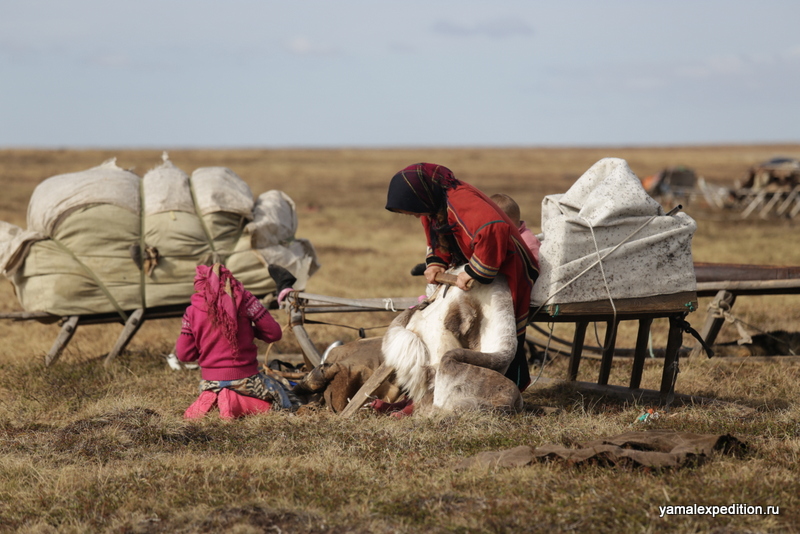

Besides going on herders duty and looking after fish nets, during short summer time men have to prepare some important things for the whole year: to make lassos, nartas and horeys. On the picture below Yaroslav has spread the raw reindeer skin cut for making trasitional Nenets lasso:

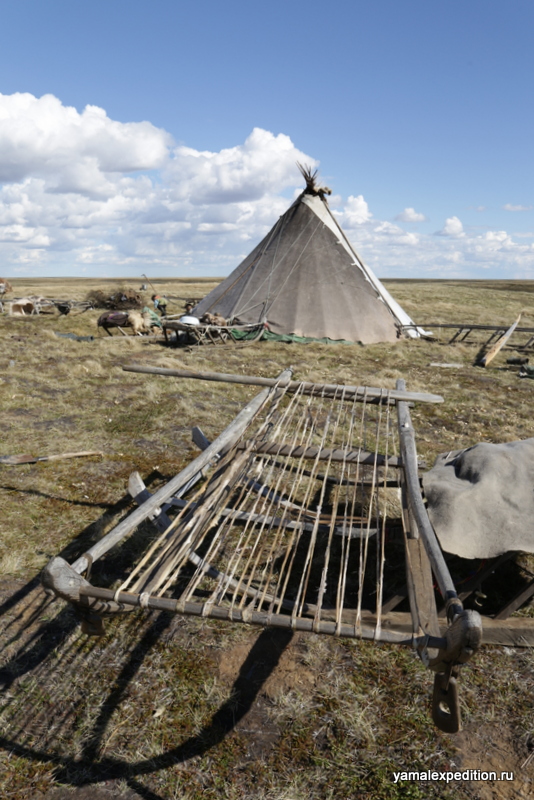
Yaroslav is making a new horey (leading stick), Myangcha is watching him by work:
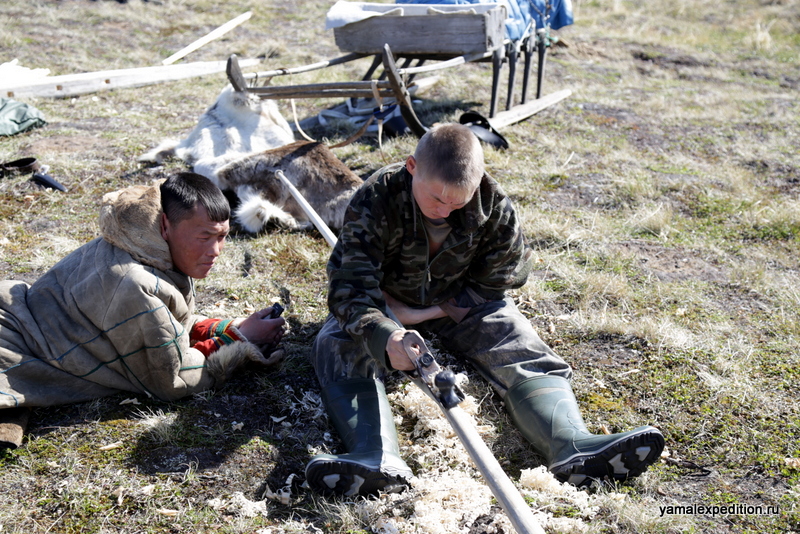

Kosya-nisya (Savali Podovitch) is making a narta:

We also would like to publish here a Facebook comment of Hudi Sergey, vice-president of Association "Yamal for descendants":
This time of the year first mosquitos (Nenets "serag nyaneng") begin to appear, but nobody really cares till there are not many. During sunny days reindeers are trying to stay close together, and this is convenient for herders. Old fur falls off, underfur is tickling reindeers: they think this sensation is caused by mosquitons, and are huddling together. Also it's warmer to stay close together, and the appearing warmth let mosquitos to get away and not bite the animals. There are also gad-flies which are "cleverer" and try to attach reindeer from the downside.

